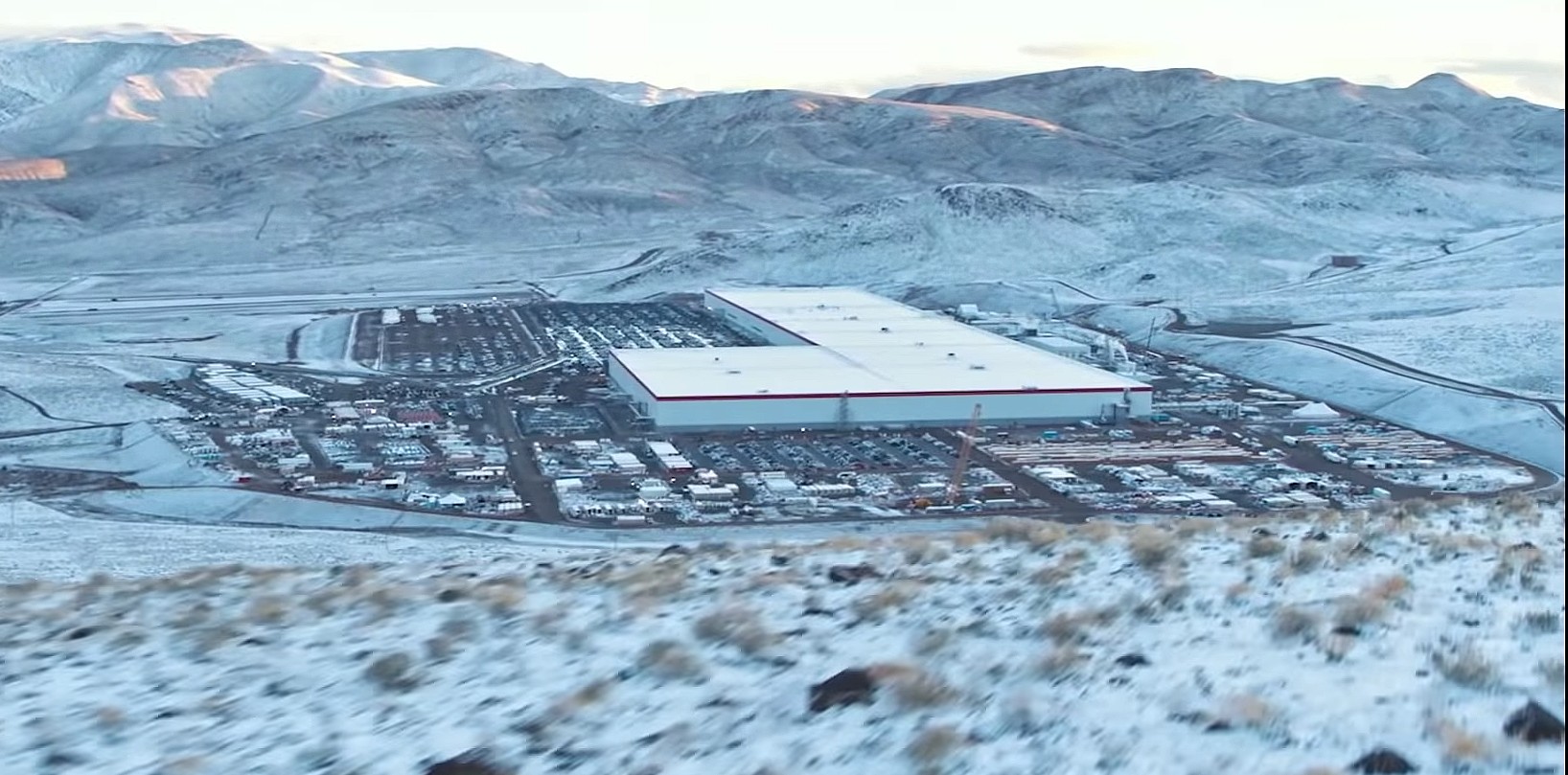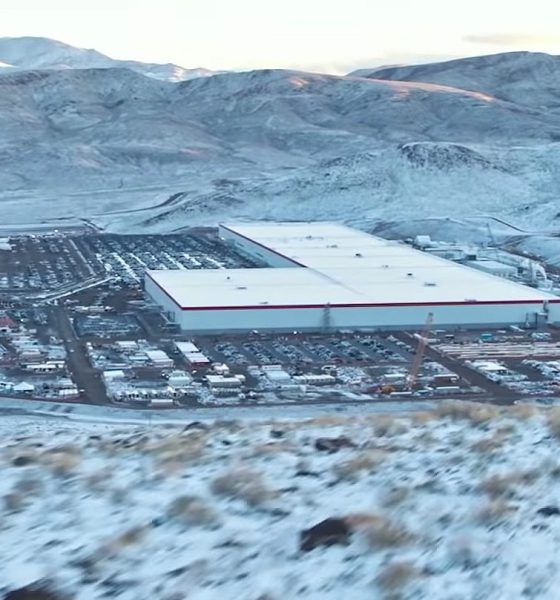A newly published patent from Tesla aims to bring the company’s idea for a one-million mile battery to life by using numerous electrolyte additives to increase the longevity and performance of its lithium-ion cells.
Tesla submitted the patent for “Dioxazolones and Nitrile Sulfites as Electrolyte Additives for Lithium-Ion Batteries” in August 2018. The patent is focused on improving the company’s rechargeable battery systems by adjusting the cells’ chemistry.
The patent claims that the addition of electrolyte additives, like lithium salt, can drastically improve the longevity and performance of battery systems when combined with a nonaqueous solution. A nonaqueous solution does not include water as the solvent, but rather another liquid.
The patent states:
Electrolyte additives have been shown to be operative and increase the lifetime and performance of Li-ion-based batteries… To further progress the adoption of electric vehicles and grid energy storage applications, it is desirable to develop lithium-ion cell chemistries that offer longer lifetimes at high temperatures and high cell voltages, without significantly increasing cost. The introduction of sacrificial electrolyte additives on the order of a few weight percent is a practical method to form protective solid-electrolyte interphase (SEI) layers that limit electrolyte decomposition during cell storage and operation. In recent years, significant efforts have yielded a large number of such additives that may be used to improve cell performance for various applications. Examples are vinylene carbonate (VC), fluoroethylene carbonate (FEC), prop-l-ene-l,3-sultone (PES), ethylene sulfate (1, 3, 2-dioxathiolane-2, 2-dioxide, DTD), and lithium difluorophosphate (LFO)
Tesla recognizes that increased temperatures are detrimental to the lifespan of a battery system. In a previous patent, Tesla outlined a cooling system that could lead to longer-lasting energy storage systems. While heat is unavoidable as it is a key player in the use of lithium-ion batteries, especially when owners of Tesla vehicles are operating in performance modes, engineers realize the solvents and solutions could be a way to improve performance and lifespan without significantly increasing cost.
In a way, a good part of Tesla’s lead in the electric car industry lies in the company’s batteries, or more specifically, its cell chemistry. It is these factors that allow Tesla to maximize its vehicles’ battery packs, and a key reason why the Model S Long Range is able to travel 373 miles on one charge with a 100 kWh battery, and why the Porsche Taycan can only go 201 miles per charge on a pack that’s nearly as large. This patent confirms that Tesla continues to work on improving its batteries, allowing the company to maintain or even increase its lead in the EV segment.
At Tesla’s Autonomy Day in April 2019, Elon Musk promised owners that the company would soon power its vehicles for upwards of one million miles over the span of the vehicle’s life. While the claim seemed enthusiastic and somewhat unrealistic, critics soon realized Tesla may be closer to this than many think. In September, a team of researchers led by Jeff Dahn at Dalhousie University published a research paper that claimed they had developed a lithium-ion battery capable of one million miles of driving, or 20 years of use in an energy-storage system.
Tesla’s battery technology continues to advance thanks to developments from its engineers. It appears Tesla is aiming to create a line of products that will last decades. In terms of automobiles, it would be groundbreaking to have a car that could run for 20 or 30 years with relatively no annual maintenance. Convenience, performance, and longevity are three things Tesla’s products are aimed toward, and the patent for an advanced and more affordable battery system thanks to an electrolyte solvent could alleviate any concerns some owners may have.

Elon Musk
Elon Musk’s X will start using a Tesla-like software update strategy
The initiative seems designed to accelerate updates to the social media platform, while maintaining maximum transparency.

Elon Musk’s social media platform X will adopt a Tesla-esque approach to software updates for its algorithm.
The initiative seems designed to accelerate updates to the social media platform, while maintaining maximum transparency.
X’s updates to its updates
As per Musk in a post on X, the social media company will be making a new algorithm to determine what organic and advertising posts are recommended to users. These updates would then be repeated every four weeks.
“We will make the new 𝕏 algorithm, including all code used to determine what organic and advertising posts are recommended to users, open source in 7 days. This will be repeated every 4 weeks, with comprehensive developer notes, to help you understand what changed,” Musk wrote in his post.
The initiative somewhat mirrors Tesla’s over-the-air update model, where vehicle software is regularly refined and pushed to users with detailed release notes. This should allow users to better understand the details of X’s every update and foster a healthy feedback loop for the social media platform.
xAI and X
X, formerly Twitter, has been acquired by Elon Musk’s artificial intelligence startup, xAI last year. Since then, xAI has seen a rapid rise in valuation. Following the company’s the company’s upsized $20 billion Series E funding round, estimates now suggest that xAI is worth tens about $230 to $235 billion. That’s several times larger than Tesla when Elon Musk received his controversial 2018 CEO Performance Award.
As per xAI, the Series E funding round attracted a diverse group of investors, including Valor Equity Partners, Stepstone Group, Fidelity Management & Research Company, Qatar Investment Authority, MGX, and Baron Capital Group, among others. Strategic partners NVIDIA and Cisco Investments also continued support for building the world’s largest GPU clusters.
News
Tesla FSD Supervised wins MotorTrend’s Best Driver Assistance Award
The decision marks a notable reversal for the publication from prior years, with judges citing major real-world improvements that pushed Tesla’s latest FSD software ahead of every competing ADAS system.

Tesla’s Full Self-Driving (Supervised) system has been named the best driver-assistance technology on the market, earning top honors at the 2026 MotorTrend Best Tech Awards.
The decision marks a notable reversal for the publication from prior years, with judges citing major real-world improvements that pushed Tesla’s latest FSD software ahead of every competing ADAS system. And it wasn’t even close.
MotorTrend reverses course
MotorTrend awarded Tesla FSD (Supervised) its 2026 Best Tech Driver Assistance title after extensive testing of the latest v14 software. The publication acknowledged that it had previously criticized earlier versions of FSD for erratic behavior and near-miss incidents, ultimately favoring rivals such as GM’s Super Cruise in earlier evaluations.
According to MotorTrend, the newest iteration of FSD resolved many of those shortcomings. Testers said v14 showed far smoother behavior in complex urban scenarios, including unprotected left turns, traffic circles, emergency vehicles, and dense city streets. While the system still requires constant driver supervision, judges concluded that no other advanced driver-assistance system currently matches its breadth of capability.
Unlike rival systems that rely on combinations of cameras, radar, lidar, and mapped highways, Tesla’s FSD operates using a camera-only approach and is capable of driving on city streets, rural roads, and freeways. MotorTrend stated that pure utility, the ability to handle nearly all road types, ultimately separated FSD from competitors like Ford BlueCruise, GM Super Cruise, and BMW’s Highway Assistant.
High cost and high capability
MotorTrend also addressed FSD’s pricing, which remains significantly higher than rival systems. Tesla currently charges $8,000 for a one-time purchase or $99 per month for a subscription, compared with far lower upfront and subscription costs from other automakers. The publication noted that the premium is justified given FSD’s unmatched scope and continuous software evolution.
Safety remained a central focus of the evaluation. While testers reported collision-free operation over thousands of miles, they noted ongoing concerns around FSD’s configurable driving modes, including options that allow aggressive driving and speeds beyond posted limits. MotorTrend emphasized that, like all Level 2 systems, FSD still depends on a fully attentive human driver at all times.
Despite those caveats, the publication concluded that Tesla’s rapid software progress fundamentally reshaped the competitive landscape. For drivers seeking the most capable hands-on driver-assistance system available today, MotorTrend concluded Tesla FSD (Supervised) now stands alone at the top.
News
Elon Musk’s Grokipedia surges to 5.6M articles, almost 79% of English Wikipedia
The explosive growth marks a major milestone for the AI-powered online encyclopedia, which was launched by Elon Musk’s xAI just months ago.

Elon Musk’s Grokipedia has grown to an impressive 5,615,201 articles as of today, closing in on 79% of the English Wikipedia’s current total of 7,119,376 articles.
The explosive growth marks a major milestone for the AI-powered online encyclopedia, which was launched by Elon Musk’s xAI just months ago. Needless to say, it would only be a matter of time before Grokipedia exceeds English Wikipedia in sheer volume.
Grokipedia’s rapid growth
xAI’s vision for Grokipedia emphasizes neutrality, while Grok’s reasoning capabilities allow for fast drafting and fact-checking. When Elon Musk announced the initiative in late September 2025, he noted that Grokipedia would be an improvement to Wikipedia because it would be designed to avoid bias.
At the time, Musk noted that Grokipedia “is a necessary step towards the xAI goal of understanding the Universe.”
Grokipedia was launched in late October, and while xAI was careful to list it only as Version 0.1 at the time, the online encyclopedia immediately earned praise. Wikipedia co-founder Larry Sanger highlighted the project’s innovative approach, noting how it leverages AI to fill knowledge gaps and enable rapid updates. Netizens also observed how Grokipedia tends to present articles in a more objective manner compared to Wikipedia, which is edited by humans.
Elon Musk’s ambitious plans
With 5,615,201 total articles, Grokipedia has now grown to almost 79% of English Wikipedia’s article base. This is incredibly quick, though Grokipedia remains text-only for now. xAI, for its part, has now updated the online encyclopedia’s iteration to v0.2.
Elon Musk has shared bold ideas for Grokipedia, including sending a record of the entire knowledge base to space as part of xAI’s mission to preserve and expand human understanding. At some point, Musk stated that Grokipedia will be renamed to Encyclopedia Galactica, and it will be sent to the cosmos.
“When Grokipedia is good enough (long way to go), we will change the name to Encyclopedia Galactica. It will be an open source distillation of all knowledge, including audio, images and video. Join xAI to help build the sci-fi version of the Library of Alexandria!” Musk wrote, adding in a later post that “Copies will be etched in stone and sent to the Moon, Mars and beyond. This time, it will not be lost.”










